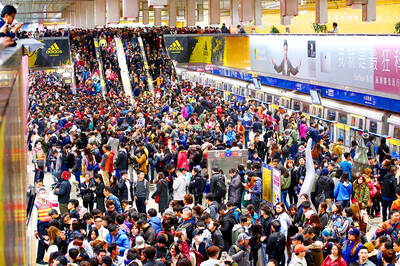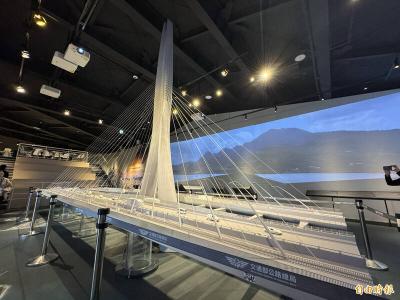Democratic Progressive Party (DPP) legislators yesterday strongly denied allegations by former National Security Council (NSC) secretary-general Su Chi (蘇起) that former president Chen Shui-bian (陳水扁) had formed a secret committee to explore the feasibility of developing nuclear weapons after a new book by a US go-between brought the nuclear controversy back into the spotlight.
DPP Legislator Kuan Bi-ling (管碧玲) accused Su at a press conference of lying and the party has demanded an investigation into the matter.
“This is a joke,” Kuan said, calling the allegations another lie by Su, who in 2006 admitted that he had created the co-called “1992 consensus” between Taiwan and China.
Kuan called on President Ma Ying-jeou’s (馬英九) administration to launch a special committee to investigate the nuclear allegations and the “1992 consensus.”
The Chinese-language United Daily News yesterday quoted Su as confirming the content of a book authored by US academic on cross-strait affairs Jeremy Stone.
In the second half of his memoir Catalytic Diplomacy: Russia, China, North Korea and Iran, Stone writes that he was first alarmed by an Aug. 13, 2004, editorial in the Taipei Times that speculated on the need for Taiwan to acquire or develop nuclear weapons as a deterrent against Chinese aggression.
Stone said he learned from a source that the DPP administration had set up a committee under then-NSC secretary-general Chiou I-jen (邱義仁) to explore the feasibility of a nuclear weapons program.
Stone said the source told him the move was intended as a bargaining chip and a “greater security guarantee” from Beijing and Washington.
The diplomat said he launched an investigation into the matter and informed the US of the potential dangers involved with Taipei’s alleged move.
One of Stone’s sources, which he characterized as having “impeccable standing,” told Stone that he had been told by a former senior Taiwanese military official that Taiwan “still has a military project going on in the nuclear area.”
“The speculation is probably true,” United Daily News quoted Su as saying, adding that he had received similar information from a DPP friend in 2007, when he was a legislator.
Su said an important DPP official who is still active in the political scene in southern Taiwan had discussed the matter with his source after being apprised by Chen in person of the nuclear plan.
Su asked then-premier Chang Chun-hsiung (張俊雄) and then-minister of national defense Lee Tien-yu (李天羽) about the allegations in the legislature on Oct. 19, 2007, but the pair dismissed the information, while the former president refuted the accusation the next day, saying the DPP administration would never develop nuclear weapons.
Asked for comment yesterday, KMT Legislator Lin Yu-fang (林郁方), a four-term legislator on the Foreign and National Defense Committee, dismissed the possibility of Taiwan ever developing nuclear weapons.
“I’ve never heard of it,” Lin said, adding that even if the DPP administration had explored that possibility, “they might have awakened from the dream really soon and realized that they could not see things through.”
“It would be impossible to develop nuclear weapons behind Washington’s back,” Lin said.

READY: The CGA said it closely monitored China’s maritime exercise, deployed vessels to shadow the Chinese ships one-on-one and set up emergency response centers Chinese navy and coast guard ships have returned to China, signaling the end of a massive maritime exercise, authorities said yesterday. The Coast Guard Administration (CGA) released images it said showed Chinese vessels sailing north in rough seas past Taiwan on Thursday, on their way to China. “All the Chinese coast guard went back to China yesterday, so although they have not officially made any announcement, we consider it over,” CGA Deputy Director-General Hsieh Ching-chin (謝慶欽) said. Beijing has not confirmed the drills and the Chinese Ministry of National Defense did not say whether the maneuvers had taken place when asked at a

People can take the Taipei MRT free of charge if they access it at Nanjing Sanmin Station or Taipei Arena Station on the Green Line between 12am and 6am on Jan. 1, the Taipei Department of Transportation said on Friday, outlining its plans to ease crowding during New Year’s events in the capital. More than 200,000 people are expected to attend New Year’s Eve events in Taipei, with singer A-mei (張惠妹) performing at the Taipei Dome and the city government’s New Year’s Eve party at Taipei City Hall Plaza, the department said. As people have tended to use the MRT’s Blue or

PUBLIC TRANSPORT: As some roads would be fully or partially closed, people are advised to take the MRT, with services expanded to accommodate more riders This year’s Taipei Marathon, which has obtained its first gold label certification from World Athletics, is to be held from 5am to 1pm tomorrow and would have 28,000 participants. The race is to start from the Taipei City Plaza and would go through major roads throughout the city, with traffic control implemented from 6am to 2pm, officials said. The Taipei Mass Rapid Transit (MRT) system and New Taipei City MRT Circle line would start operating at 5am on the day of the race, they said. The race would cover Renai Road, Xinyi Road, Hangzhou S Road, Aiguo east and west roads,

Upon its completion next year, the new Tamkang Bridge (淡江大橋) in New Taipei City is to be an important landmark in Taiwan, alongside Taipei 101, Minister of Transportation and Communications Chen Shi-kai (陳世凱) said today. The bridge is scheduled to be completed in December next year and open to the public in the first half of 2026, connecting New Taipei City’s Tamsui (淡水) and Bali (八里) districts. It is an asymmetric single-tower suspension bridge, nearly 70 stories tall, designed by world-famous architect Zaha Hadid. The bridge aims to alleviate traffic in Tamsui and on the Guandu Bridge (關渡大橋), in addition to increasing the